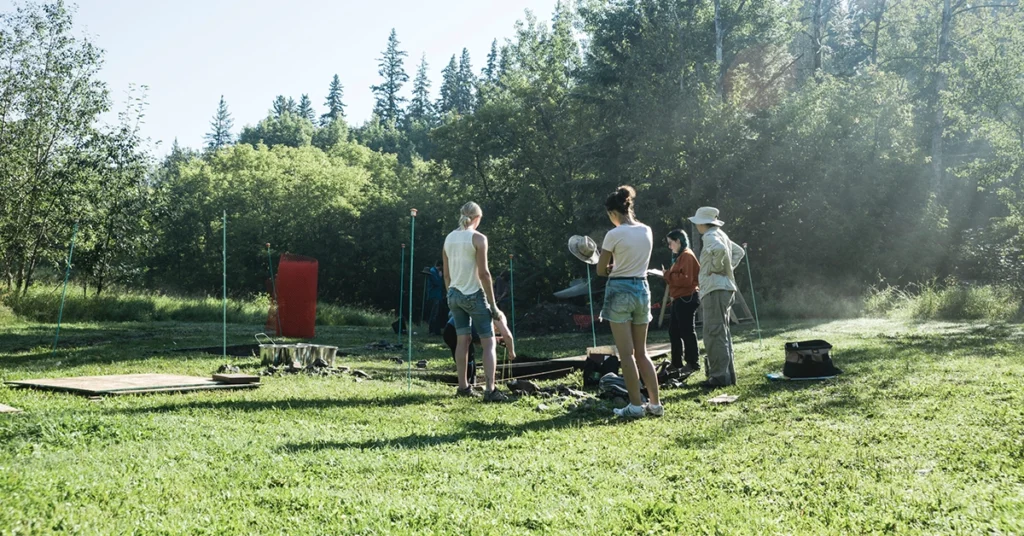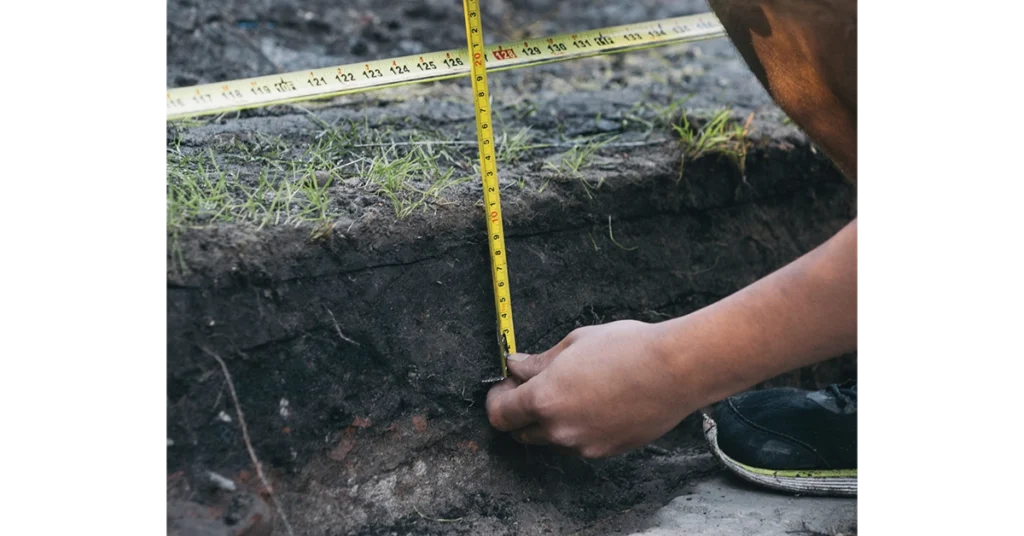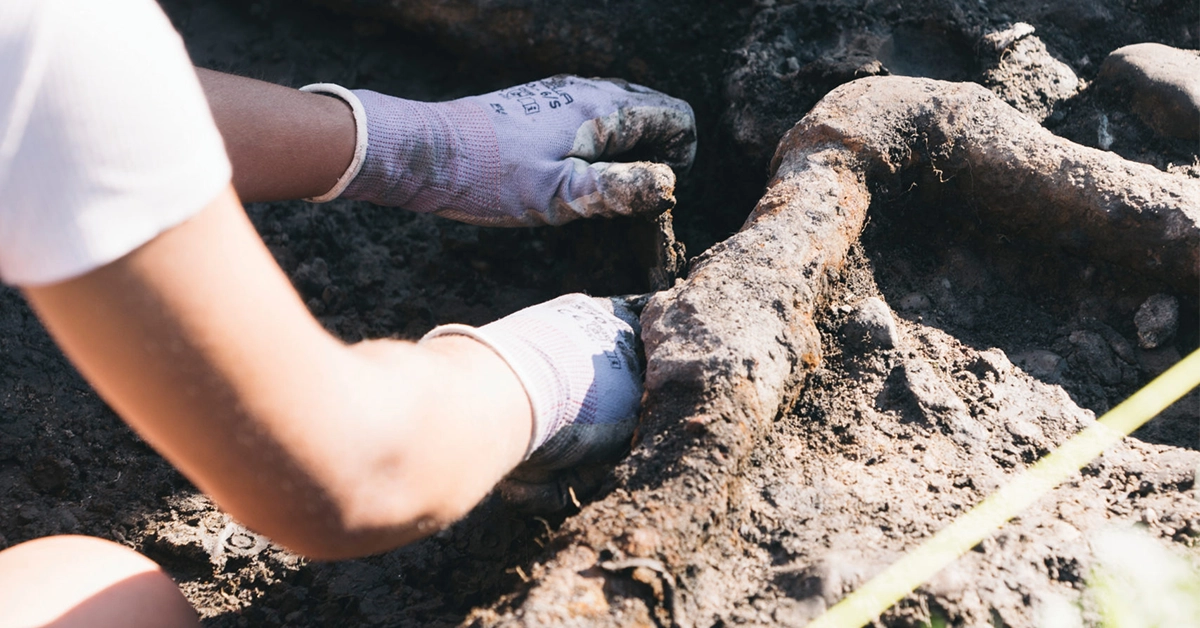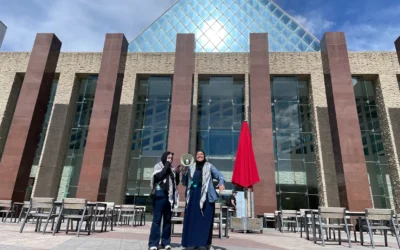Archaeology may be, for many, a term primarily associated with faraway places. Egyptian mummies, ancient ruins, and dinosaur bones might come to mind.
But this summer the digging was in Edmonton’s backyard, and MacEwan University students got to be a part of it.
The excavation site, located around 88th Avenue in Mill Creek Ravine, was once a Vogel’s meat-packing plant. It was one of three such plants in the area that operated from around 1901 until the WWI era. The artifacts found at the site will hopefully offer clues about what the industrial period was like in Edmonton, as the ravine was one of the first industrial areas
in Alberta.
“While Mill Creek today is a place where we walk our dogs, wander through the creek, and have picnics, 120 years ago it was a major industrial centre,” says Katie Biitner, an anthropology professor at MacEwan.
The project was led by PhD student Haeden Stewart from the University of Chicago. He was in Edmonton last year looking at the shanty towns around the same area, focusing on the personal lives of the people there. The research this year will be centred around the work that residents did and will aim to provide a more rounded view of the ravine.
“We wanted to know more about the building, and the activities, and how that was evident by what was left behind,” says Biitner.
Considering the relatively small scope of the excavation, a surprising number of interesting items were uncovered from what was once the meat packer’s garbage dump. The artifacts include an array of different materials, from bricks and pieces of bottle glass to more domestic items like smoking pipes and a bridle. They even found buttons from Edmonton-made GWG jeans. But for many, the most interesting items have been the bones of livestock that were slaughtered there.
“While Mill Creek
today is a place where we walk our dogs, wander through the creek, and have picnics, 120 years ago it was a major industrial centre.”
—Katie Biitner
“The big show piece for visitors to the site (was) the bones,” says Biitner. “Lots and lots of cow bones. That was kind of surprising for us because they’re really well preserved; they’re not all crumbly like you might expect from something that’s 100 or 120 years old.”
A couple of students volunteered to help Stewart with his excavation when he sent a call out into the community. However, when professors in MacEwan’s anthropology department heard about the undertaking, they decided to formalize the work so the eight students who participated could get credit as part of their undergraduate programs.
Not all students have the opportunity to work on a dig at this scale, and most who do are required to travel extensively to do so. Biitner says the learning is tenfold when students have the chance to actively participate in research projects such as this one.
“What I thought was kind of really nice about this one is they’re supporting the research of another student; a PhD student, but a student nonetheless,” she says. “And it allows students to see where they could potentially go as well.”
Now that the site has been closed, the artifacts are being analyzed at the university. A lot of the findings have brought up more questions than they answered. In addition to basic cleaning and cataloguing, typological analysis will help the team make more generalized deductions about the site as a whole.

The results from this examination will be used by students in the course to complete their own research projects, which will not only be graded but will ultimately supplement the broader research being done by Stewart, says Biitner.
Josalyne Head, a fourth-year anthropology student, has taken particular interest in several bullet casings found around the site. The casings were an unusual find for a meat-packing plant, since killing livestock with bullets was considered a waste of ammunition. This leaves the question of what their real purpose was. Head has dedicated her personal research to the headstamp markings on the bullets in hopes of finding out.
“The different letters and numbers on there (tell us) where they’re from, what time they’re from, and how they were made and used,” she says.

Unfortunately, her work was set back considerably after the theft of some artifacts from the site in early August. Several bones were taken from the site, bones which could have given Head answers if they had turned out to have bullet markings.
After the analysis is done, all of the artifacts will be handed over to the Royal Alberta Museum, which is one of the official cultural repositories in Alberta. There is no guarantee the museum will ever exhibit the artifacts from the site; the pieces could simply be put in permanent storage for safekeeping. However, the students are hopeful that, with the new museum opening in 2018, they will eventually be able to show off their work.
“I would love to go in there and be like, ‘Hey, I dug that out of the ground.’ That would be really exciting to see,” says Head. “I hope that they actually end up doing something with it.”
Stewart will be returning to Edmonton in mid-November to discuss the official findings of the dig and what he has discovered about Alberta’s history.
In the meantime, Biitner says one of the students is in the process of designing and curating an exhibit to showcase the artifacts for the community. Elementary schools and the community league in Bonnie Doon have expressed interest in having the artifacts back in their neighbourhood for the public to see. Here at MacEwan, the showcase is tentatively scheduled to be shown in the CAFÉ space sometime in the fall semester of this year, with the opportunity for more exhibits in the future.
“Our goal, really, is to make these materials, this project, and the research accessible to all of MacEwan students,” says Biitner. “(Not just) those who participated in the field school.”
Photography by Matthew Jacula.





0 Comments